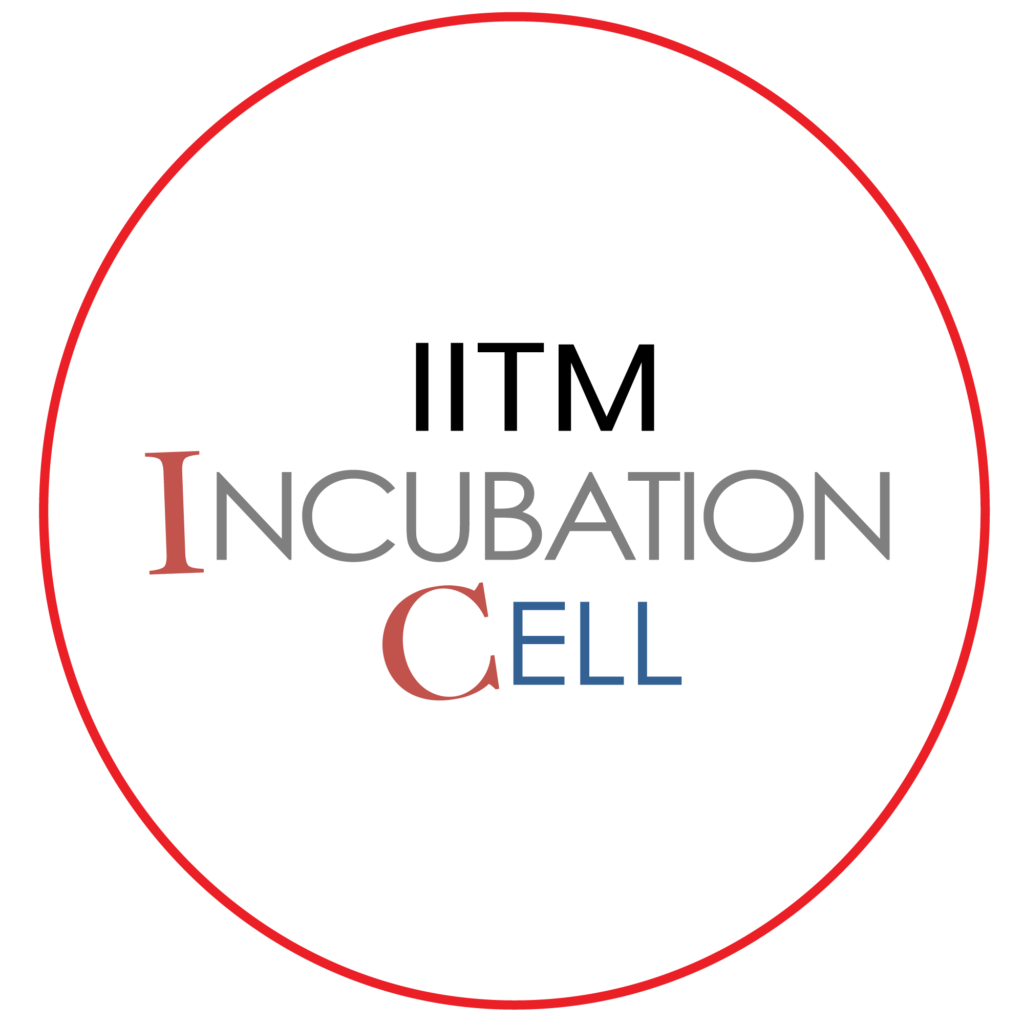Mostbet: Elite Betting Platform
Join Mostbet for thrilling experiences and top rewards in betting.
BC Game: Crypto Casino & Betting
Play at BC Game for secure crypto betting and huge bonuses.
1XBET: Trusted Sports Betting
Enjoy 1XBET for unmatched sports betting with exciting promotions.
1XBETC: Premium Betting Platform
Try 1XBETC for top-tier sports betting experiences and promotions.
1XBETM: Your Betting Destination
Join 1XBETM for unmatched betting opportunities.
1XBETMA: Leading Betting Platform
Explore 1XBETMA for thrilling betting experiences and bonuses.
1XBETMN: Top Sports Betting
Join 1XBETMN for exclusive rewards and betting fun.
Bet Pro: Ultimate Betting Platform
Join Bet Pro for exclusive sports betting offers and big wins.
Bet Pro Login: Access Your Account
Securely log in to your Bet Pro account and start betting today.
Parimatch: Premier Betting Experience
Experience the thrill at Parimatch with the best odds and bonuses.
Betfair: Global Betting Leader
Discover Betfair for a top-tier betting platform and exciting rewards.
MCW: Leading Betting Site
Join MCW for unmatched betting offers and bonuses in Pakistan.
Baji: Trusted Betting Platform
Explore Baji for secure and thrilling betting opportunities.
Melbet: Top Online Betting
Discover Melbet for exciting sports betting and casino action.
1XBET App: Mobile Betting at Its Best
Download the 1XBET App for on-the-go sports betting and gaming.
1XBET Download: Quick & Easy
Get the 1XBET Download to enjoy betting anytime, anywhere.
1XBET Log In: Secure Access
Log in to your 1XBET account to start betting.
1XBET App: Best Mobile Betting Platform
Download the 1XBET App for seamless mobile betting experiences.
1XBET Logins: Quick Access
Securely access your account with 1XBET Logins.
Download 1XBET: Start Betting Now
Get 1XBET today for top sports betting action.
Melbet: Elite Betting Destination
Explore Melbet for thrilling betting opportunities and big wins.
Meltbet: Premier Betting Platform
Join Meltbet for exclusive bonuses and rewards.
Stake: Bet & Win Big
Try Stake for top-tier betting options and exciting promotions.
Baji Live: Real-Time Betting
Experience live betting with Baji Live for thrilling action and big wins.
Baji Login: Secure Access
Log in securely to your Baji account to access your bets and rewards.
Baji999: Leading Betting Platform
Join Baji999 for thrilling betting opportunities and rewards.
Baji Live: Bet & Win Now
Get into the action with Baji Live for unmatched live betting experiences.
Betfair: Elite Betting Platform
Explore Betfair for top betting options and huge bonuses.
BetfairIT: Trusted Betting Platform
Join BetfairIT for premier sports betting and big rewards.
Bet365: Trusted Sports Betting
Explore Bet365 for unmatched sports betting opportunities.
Mostbet: Elite Betting Platform
Join Mostbet for thrilling experiences and top rewards in betting.
BC Game: Crypto Casino & Betting
Play at BC Game for secure crypto betting and huge bonuses.
1XBET: Trusted Sports Betting
Enjoy 1XBET for unmatched sports betting with exciting promotions.
1XBETC: Premium Betting Platform
Try 1XBETC for top-tier sports betting experiences and promotions.
1XBETM: Your Betting Destination
Join 1XBETM for unmatched betting opportunities.
1XBETMA: Leading Betting Platform
Explore 1XBETMA for thrilling betting experiences and bonuses.
1XBETMN: Top Sports Betting
Join 1XBETMN for exclusive rewards and betting fun.
Bet Pro: Ultimate Betting Platform
Join Bet Pro for exclusive sports betting offers and big wins.
Bet Pro Login: Access Your Account
Securely log in to your Bet Pro account and start betting today.
Parimatch: Premier Betting Experience
Experience the thrill at Parimatch with the best odds and bonuses.
Betfair: Global Betting Leader
Discover Betfair for a top-tier betting platform and exciting rewards.
MCW: Leading Betting Site
Join MCW for unmatched betting offers and bonuses in Pakistan.
Baji: Trusted Betting Platform
Explore Baji for secure and thrilling betting opportunities.
Melbet: Top Online Betting
Discover Melbet for exciting sports betting and casino action.
1XBET App: Mobile Betting at Its Best
Download the 1XBET App for on-the-go sports betting and gaming.
1XBET Download: Quick & Easy
Get the 1XBET Download to enjoy betting anytime, anywhere.
1XBET Log In: Secure Access
Log in to your 1XBET account to start betting.
1XBET App: Best Mobile Betting Platform
Download the 1XBET App for seamless mobile betting experiences.
1XBET Logins: Quick Access
Securely access your account with 1XBET Logins.
Download 1XBET: Start Betting Now
Get 1XBET today for top sports betting action.
Melbet: Elite Betting Destination
Explore Melbet for thrilling betting opportunities and big wins.
Meltbet: Premier Betting Platform
Join Meltbet for exclusive bonuses and rewards.
Stake: Bet & Win Big
Try Stake for top-tier betting options and exciting promotions.
Baji Live: Real-Time Betting
Experience live betting with Baji Live for thrilling action and big wins.
Baji Login: Secure Access
Log in securely to your Baji account to access your bets and rewards.
Baji999: Leading Betting Platform
Join Baji999 for thrilling betting opportunities and rewards.
Baji Live: Bet & Win Now
Get into the action with Baji Live for unmatched live betting experiences.
Betfair: Elite Betting Platform
Explore Betfair for top betting options and huge bonuses.
BetfairIT: Trusted Betting Platform
Join BetfairIT for premier sports betting and big rewards.
Bet365: Trusted Sports Betting
Explore Bet365 for unmatched sports betting opportunities.
Mostbet: Elite Betting Platform
Join Mostbet for thrilling experiences and top rewards in betting.
BC Game: Crypto Casino & Betting
Play at BC Game for secure crypto betting and huge bonuses.
1XBET: Trusted Sports Betting
Enjoy 1XBET for unmatched sports betting with exciting promotions.
1XBETC: Premium Betting Platform
Try 1XBETC for top-tier sports betting experiences and promotions.
1XBETM: Your Betting Destination
Join 1XBETM for unmatched betting opportunities.
1XBETMA: Leading Betting Platform
Explore 1XBETMA for thrilling betting experiences and bonuses.
1XBETMN: Top Sports Betting
Join 1XBETMN for exclusive rewards and betting fun.
Bet Pro: Ultimate Betting Platform
Join Bet Pro for exclusive sports betting offers and big wins.
Bet Pro Login: Access Your Account
Securely log in to your Bet Pro account and start betting today.
Parimatch: Premier Betting Experience
Experience the thrill at Parimatch with the best odds and bonuses.
Betfair: Global Betting Leader
Discover Betfair for a top-tier betting platform and exciting rewards.
MCW: Leading Betting Site
Join MCW for unmatched betting offers and bonuses in Pakistan.
Baji: Trusted Betting Platform
Explore Baji for secure and thrilling betting opportunities.
Melbet: Top Online Betting
Discover Melbet for exciting sports betting and casino action.
1XBET App: Mobile Betting at Its Best
Download the 1XBET App for on-the-go sports betting and gaming.
1XBET Download: Quick & Easy
Get the 1XBET Download to enjoy betting anytime, anywhere.
1XBET Log In: Secure Access
Log in to your 1XBET account to start betting.
1XBET App: Best Mobile Betting Platform
Download the 1XBET App for seamless mobile betting experiences.
1XBET Logins: Quick Access
Securely access your account with 1XBET Logins.
Download 1XBET: Start Betting Now
Get 1XBET today for top sports betting action.
Melbet: Elite Betting Destination
Explore Melbet for thrilling betting opportunities and big wins.
Meltbet: Premier Betting Platform
Join Meltbet for exclusive bonuses and rewards.
Stake: Bet & Win Big
Try Stake for top-tier betting options and exciting promotions.
Baji Live: Real-Time Betting
Experience live betting with Baji Live for thrilling action and big wins.
Baji Login: Secure Access
Log in securely to your Baji account to access your bets and rewards.
Baji999: Leading Betting Platform
Join Baji999 for thrilling betting opportunities and rewards.
Baji Live: Bet & Win Now
Get into the action with Baji Live for unmatched live betting experiences.
Betfair: Elite Betting Platform
Explore Betfair for top betting options and huge bonuses.
BetfairIT: Trusted Betting Platform
Join BetfairIT for premier sports betting and big rewards.
Bet365: Trusted Sports Betting
Explore Bet365 for unmatched sports betting opportunities.
Mostbet: Elite Betting Platform
Join Mostbet for thrilling experiences and top rewards in betting.
BC Game: Crypto Casino & Betting
Play at BC Game for secure crypto betting and huge bonuses.
1XBET: Trusted Sports Betting
Enjoy 1XBET for unmatched sports betting with exciting promotions.
1XBETC: Premium Betting Platform
Try 1XBETC for top-tier sports betting experiences and promotions.
1XBETM: Your Betting Destination
Join 1XBETM for unmatched betting opportunities.
1XBETMA: Leading Betting Platform
Explore 1XBETMA for thrilling betting experiences and bonuses.
1XBETMN: Top Sports Betting
Join 1XBETMN for exclusive rewards and betting fun.
Bet Pro: Ultimate Betting Platform
Join Bet Pro for exclusive sports betting offers and big wins.
Bet Pro Login: Access Your Account
Securely log in to your Bet Pro account and start betting today.
Parimatch: Premier Betting Experience
Experience the thrill at Parimatch with the best odds and bonuses.
Betfair: Global Betting Leader
Discover Betfair for a top-tier betting platform and exciting rewards.
MCW: Leading Betting Site
Join MCW for unmatched betting offers and bonuses in Pakistan.
Baji: Trusted Betting Platform
Explore Baji for secure and thrilling betting opportunities.
Melbet: Top Online Betting
Discover Melbet for exciting sports betting and casino action.
1XBET App: Mobile Betting at Its Best
Download the 1XBET App for on-the-go sports betting and gaming.
1XBET Download: Quick & Easy
Get the 1XBET Download to enjoy betting anytime, anywhere.
1XBET Log In: Secure Access
Log in to your 1XBET account to start betting.
1XBET App: Best Mobile Betting Platform
Download the 1XBET App for seamless mobile betting experiences.
1XBET Logins: Quick Access
Securely access your account with 1XBET Logins.
Download 1XBET: Start Betting Now
Get 1XBET today for top sports betting action.
Melbet: Elite Betting Destination
Explore Melbet for thrilling betting opportunities and big wins.
Meltbet: Premier Betting Platform
Join Meltbet for exclusive bonuses and rewards.
Stake: Bet & Win Big
Try Stake for top-tier betting options and exciting promotions.
Baji Live: Real-Time Betting
Experience live betting with Baji Live for thrilling action and big wins.
Baji Login: Secure Access
Log in securely to your Baji account to access your bets and rewards.
Baji999: Leading Betting Platform
Join Baji999 for thrilling betting opportunities and rewards.
Baji Live: Bet & Win Now
Get into the action with Baji Live for unmatched live betting experiences.
Betfair: Elite Betting Platform
Explore Betfair for top betting options and huge bonuses.
BetfairIT: Trusted Betting Platform
Join BetfairIT for premier sports betting and big rewards.
Bet365: Trusted Sports Betting
Explore Bet365 for unmatched sports betting opportunities.
Mostbet: Elite Betting Platform
Join Mostbet for thrilling experiences and top rewards in betting.
BC Game: Crypto Casino & Betting
Play at BC Game for secure crypto betting and huge bonuses.
1XBET: Trusted Sports Betting
Enjoy 1XBET for unmatched sports betting with exciting promotions.
1XBETC: Premium Betting Platform
Try 1XBETC for top-tier sports betting experiences and promotions.
1XBETM: Your Betting Destination
Join 1XBETM for unmatched betting opportunities.
1XBETMA: Leading Betting Platform
Explore 1XBETMA for thrilling betting experiences and bonuses.
1XBETMN: Top Sports Betting
Join 1XBETMN for exclusive rewards and betting fun.
Bet Pro: Ultimate Betting Platform
Join Bet Pro for exclusive sports betting offers and big wins.
Bet Pro Login: Access Your Account
Securely log in to your Bet Pro account and start betting today.
Parimatch: Premier Betting Experience
Experience the thrill at Parimatch with the best odds and bonuses.
Betfair: Global Betting Leader
Discover Betfair for a top-tier betting platform and exciting rewards.
MCW: Leading Betting Site
Join MCW for unmatched betting offers and bonuses in Pakistan.
Baji: Trusted Betting Platform
Explore Baji for secure and thrilling betting opportunities.
Melbet: Top Online Betting
Discover Melbet for exciting sports betting and casino action.
1XBET App: Mobile Betting at Its Best
Download the 1XBET App for on-the-go sports betting and gaming.
1XBET Download: Quick & Easy
Get the 1XBET Download to enjoy betting anytime, anywhere.
1XBET Log In: Secure Access
Log in to your 1XBET account to start betting.
1XBET App: Best Mobile Betting Platform
Download the 1XBET App for seamless mobile betting experiences.
1XBET Logins: Quick Access
Securely access your account with 1XBET Logins.
Download 1XBET: Start Betting Now
Get 1XBET today for top sports betting action.
Melbet: Elite Betting Destination
Explore Melbet for thrilling betting opportunities and big wins.
Meltbet: Premier Betting Platform
Join Meltbet for exclusive bonuses and rewards.
Stake: Bet & Win Big
Try Stake for top-tier betting options and exciting promotions.
Baji Live: Real-Time Betting
Experience live betting with Baji Live for thrilling action and big wins.
Baji Login: Secure Access
Log in securely to your Baji account to access your bets and rewards.
Baji999: Leading Betting Platform
Join Baji999 for thrilling betting opportunities and rewards.
Baji Live: Bet & Win Now
Get into the action with Baji Live for unmatched live betting experiences.
Betfair: Elite Betting Platform
Explore Betfair for top betting options and huge bonuses.
BetfairIT: Trusted Betting Platform
Join BetfairIT for premier sports betting and big rewards.
Bet365: Trusted Sports Betting
Explore Bet365 for unmatched sports betting opportunities.
Mostbet: Elite Betting Platform
Join Mostbet for thrilling experiences and top rewards in betting.
BC Game: Crypto Casino & Betting
Play at BC Game for secure crypto betting and huge bonuses.
1XBET: Trusted Sports Betting
Enjoy 1XBET for unmatched sports betting with exciting promotions.
1XBETC: Premium Betting Platform
Try 1XBETC for top-tier sports betting experiences and promotions.
1XBETM: Your Betting Destination
Join 1XBETM for unmatched betting opportunities.
1XBETMA: Leading Betting Platform
Explore 1XBETMA for thrilling betting experiences and bonuses.
1XBETMN: Top Sports Betting
Join 1XBETMN for exclusive rewards and betting fun.
Bet Pro: Ultimate Betting Platform
Join Bet Pro for exclusive sports betting offers and big wins.
Bet Pro Login: Access Your Account
Securely log in to your Bet Pro account and start betting today.
Parimatch: Premier Betting Experience
Experience the thrill at Parimatch with the best odds and bonuses.
Betfair: Global Betting Leader
Discover Betfair for a top-tier betting platform and exciting rewards.
MCW: Leading Betting Site
Join MCW for unmatched betting offers and bonuses in Pakistan.
Baji: Trusted Betting Platform
Explore Baji for secure and thrilling betting opportunities.
Melbet: Top Online Betting
Discover Melbet for exciting sports betting and casino action.
1XBET App: Mobile Betting at Its Best
Download the 1XBET App for on-the-go sports betting and gaming.
1XBET Download: Quick & Easy
Get the 1XBET Download to enjoy betting anytime, anywhere.
1XBET Log In: Secure Access
Log in to your 1XBET account to start betting.
1XBET App: Best Mobile Betting Platform
Download the 1XBET App for seamless mobile betting experiences.
1XBET Logins: Quick Access
Securely access your account with 1XBET Logins.
Download 1XBET: Start Betting Now
Get 1XBET today for top sports betting action.
Melbet: Elite Betting Destination
Explore Melbet for thrilling betting opportunities and big wins.
Meltbet: Premier Betting Platform
Join Meltbet for exclusive bonuses and rewards.
Stake: Bet & Win Big
Try Stake for top-tier betting options and exciting promotions.
Baji Live: Real-Time Betting
Experience live betting with Baji Live for thrilling action and big wins.
Baji Login: Secure Access
Log in securely to your Baji account to access your bets and rewards.
Baji999: Leading Betting Platform
Join Baji999 for thrilling betting opportunities and rewards.
Baji Live: Bet & Win Now
Get into the action with Baji Live for unmatched live betting experiences.
Betfair: Elite Betting Platform
Explore Betfair for top betting options and huge bonuses.
BetfairIT: Trusted Betting Platform
Join BetfairIT for premier sports betting and big rewards.
Bet365: Trusted Sports Betting
Explore Bet365 for unmatched sports betting opportunities.
Mostbet: Elite Betting Platform
Join Mostbet for thrilling experiences and top rewards in betting.
BC Game: Crypto Casino & Betting
Play at BC Game for secure crypto betting and huge bonuses.
1XBET: Trusted Sports Betting
Enjoy 1XBET for unmatched sports betting with exciting promotions.
1XBETC: Premium Betting Platform
Try 1XBETC for top-tier sports betting experiences and promotions.
1XBETM: Your Betting Destination
Join 1XBETM for unmatched betting opportunities.
1XBETMA: Leading Betting Platform
Explore 1XBETMA for thrilling betting experiences and bonuses.
1XBETMN: Top Sports Betting
Join 1XBETMN for exclusive rewards and betting fun.
Bet Pro: Ultimate Betting Platform
Join Bet Pro for exclusive sports betting offers and big wins.
Bet Pro Login: Access Your Account
Securely log in to your Bet Pro account and start betting today.
Parimatch: Premier Betting Experience
Experience the thrill at Parimatch with the best odds and bonuses.
Betfair: Global Betting Leader
Discover Betfair for a top-tier betting platform and exciting rewards.
MCW: Leading Betting Site
Join MCW for unmatched betting offers and bonuses in Pakistan.
Baji: Trusted Betting Platform
Explore Baji for secure and thrilling betting opportunities.
Melbet: Top Online Betting
Discover Melbet for exciting sports betting and casino action.
1XBET App: Mobile Betting at Its Best
Download the 1XBET App for on-the-go sports betting and gaming.
1XBET Download: Quick & Easy
Get the 1XBET Download to enjoy betting anytime, anywhere.
1XBET Log In: Secure Access
Log in to your 1XBET account to start betting.
1XBET App: Best Mobile Betting Platform
Download the 1XBET App for seamless mobile betting experiences.
1XBET Logins: Quick Access
Securely access your account with 1XBET Logins.
Download 1XBET: Start Betting Now
Get 1XBET today for top sports betting action.
Melbet: Elite Betting Destination
Explore Melbet for thrilling betting opportunities and big wins.
Meltbet: Premier Betting Platform
Join Meltbet for exclusive bonuses and rewards.
Stake: Bet & Win Big
Try Stake for top-tier betting options and exciting promotions.
Baji Live: Real-Time Betting
Experience live betting with Baji Live for thrilling action and big wins.
Baji Login: Secure Access
Log in securely to your Baji account to access your bets and rewards.
Baji999: Leading Betting Platform
Join Baji999 for thrilling betting opportunities and rewards.
Baji Live: Bet & Win Now
Get into the action with Baji Live for unmatched live betting experiences.
Betfair: Elite Betting Platform
Explore Betfair for top betting options and huge bonuses.
BetfairIT: Trusted Betting Platform
Join BetfairIT for premier sports betting and big rewards.
Bet365: Trusted Sports Betting
Explore Bet365 for unmatched sports betting opportunities.
Mostbet: Elite Betting Platform
Join Mostbet for thrilling experiences and top rewards in betting.
BC Game: Crypto Casino & Betting
Play at BC Game for secure crypto betting and huge bonuses.
Bet Pro: Ultimate Betting Platform
Join Bet Pro for exclusive sports betting offers and big wins.
1XBET: Trusted Sports Betting
Enjoy 1XBET for unmatched sports betting with exciting promotions.
Betway: Premium Sports Betting
Experience the best of sports betting with Betway for elite betting opportunities.


